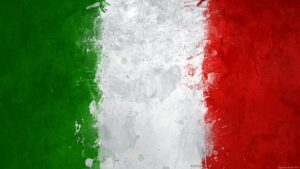The Kingdom of Art: Guide to Patan Durbar Square (Lalitpur)
6 min readWhen you visit Patan Durbar Square in Lalitpur, located just a few miles south of Kathmandu, you’ll feel as if you are wandering around an ancient, open-air museum. Of the...
The post The Kingdom of Art: Guide to Patan Durbar Square appeared first on Bucketlist Bri.
When you visit Patan Durbar Square in Lalitpur, located just a few miles south of Kathmandu, you’ll feel as if you are wandering around an ancient, open-air museum.
Of the three Durbar Squares of Kathmandu Valley (Kathmandu Durbar Square and Bhaktapur Durbar Square), Patan is one of my favorites—for reasons you’ll discover in this post!
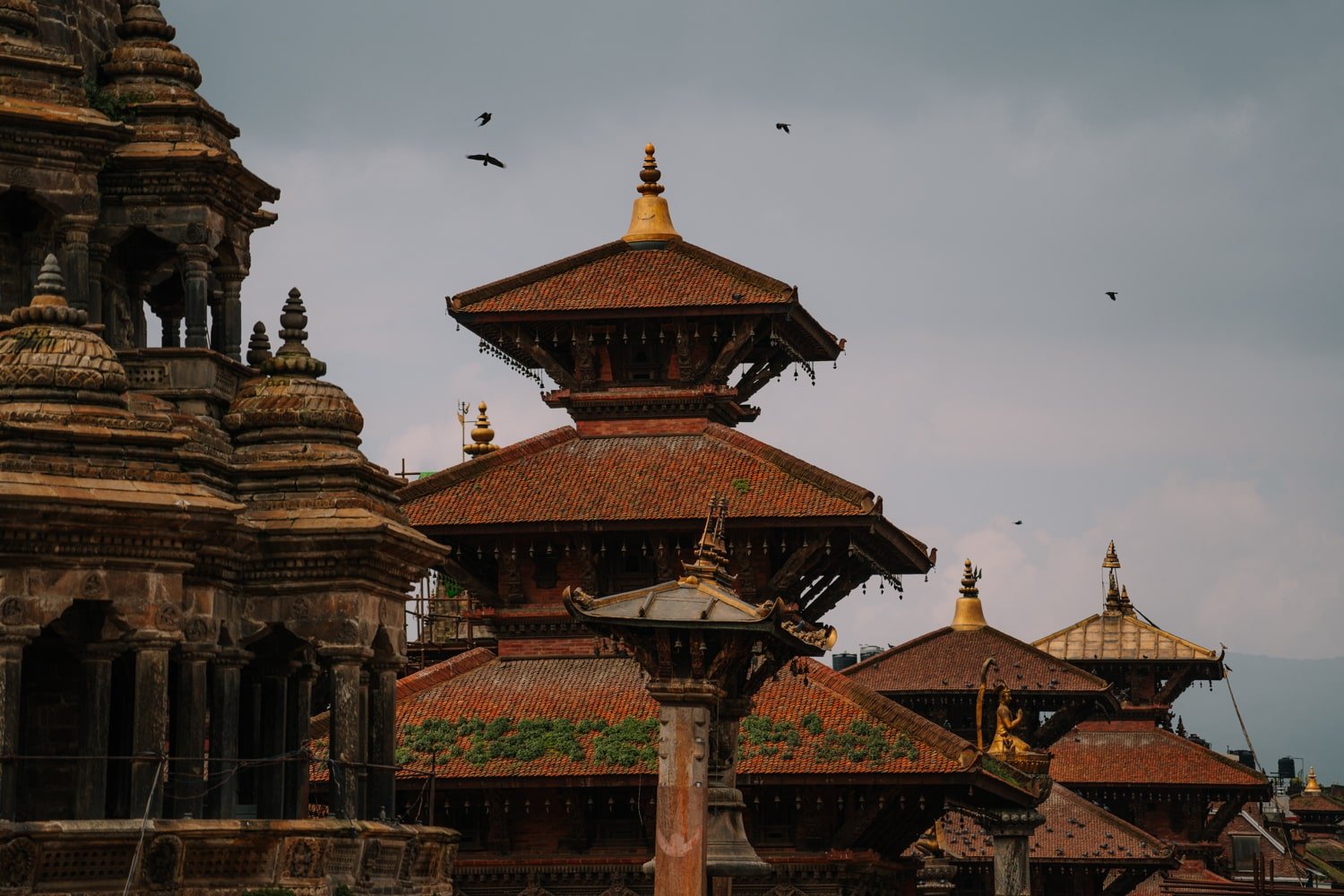
Disclaimer: This post contains affiliate links that may earn me a small commission should you decide to click through and make a valid purchase (at no extra cost to you). Thanks so much for your support!
If it’s your first time visiting Nepal, then it may be helpful to know that Durbar Square simply means palace square—where the royal families of the then-independent and separate kingdoms resided.
The three independent Newar kingdoms of Kathmandu Valley (Kantipur, now Kathmandu City; Lalitpur; and Bhadgoan now Bhaktapur) existed before Nepal’s unification in the 18th century.
These ancient kingdoms are beautifully preserved, and visiting one (or all!) is a must-do while in Nepal.
Patan Durbar Square is particularly eye-pleasing as it has gorgeous Newari architecture and art.
It also is home to one of Nepal’s most famous and sacred temples—Krishna Mandir, which is said to be carved from one stone inspired by King Siddhi Narsing Malla’s dreams.
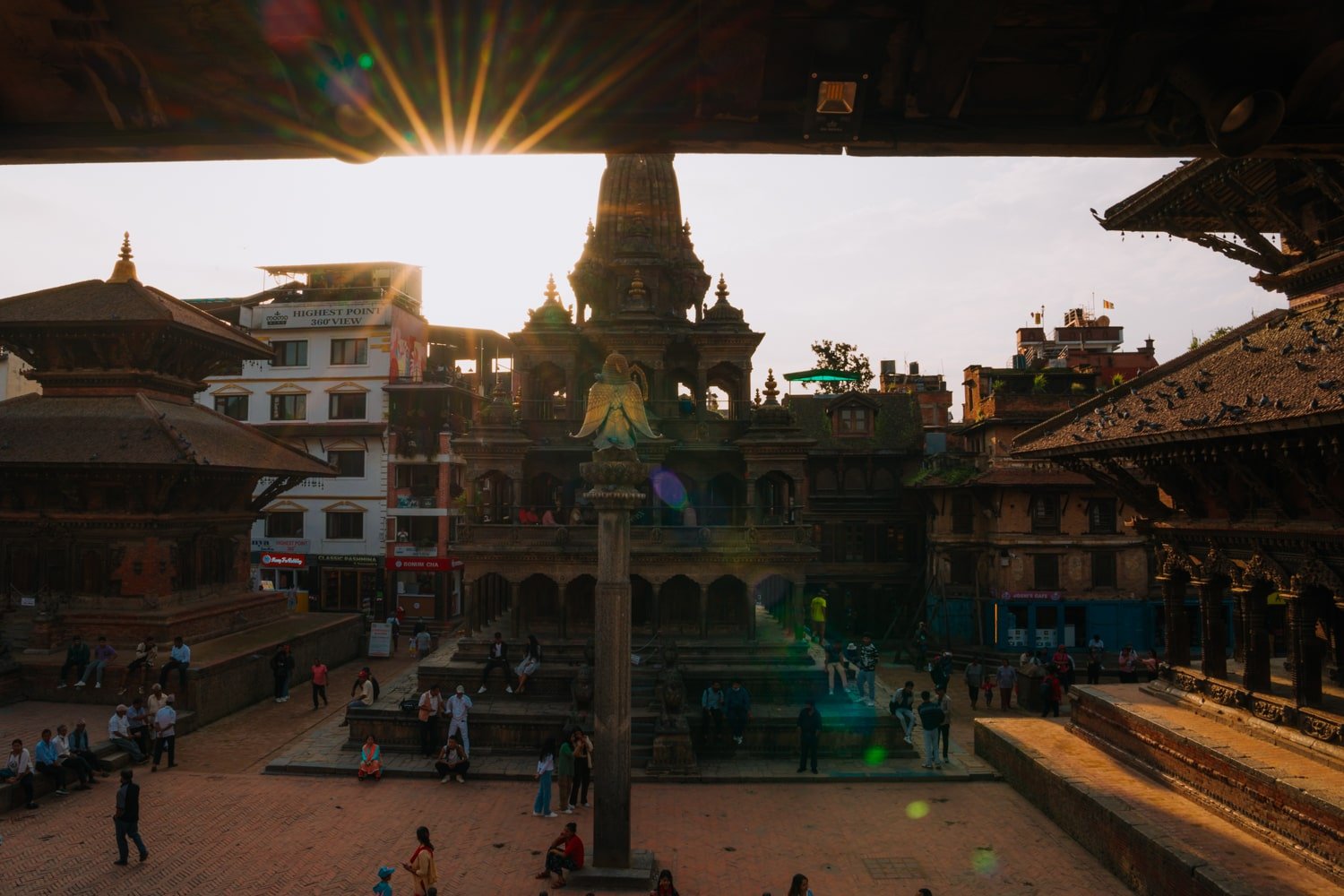
I learned about all the above and below on my private guided tour of Patan Durbar Square!
I have also visited Patan several times in the past, however many years ago (2015-2016), when I lived in Kathmandu.
However, back then, many of the structures were under reconstruction after the devasting earthquakes. So my most recent visit was quite a wonderful refresher!
Before you set out to visit Patan Durbar Square, here’s what you should know to make for a more well-informed, observant, and fun visit!
show
Your Guide to Patan Durbar Square
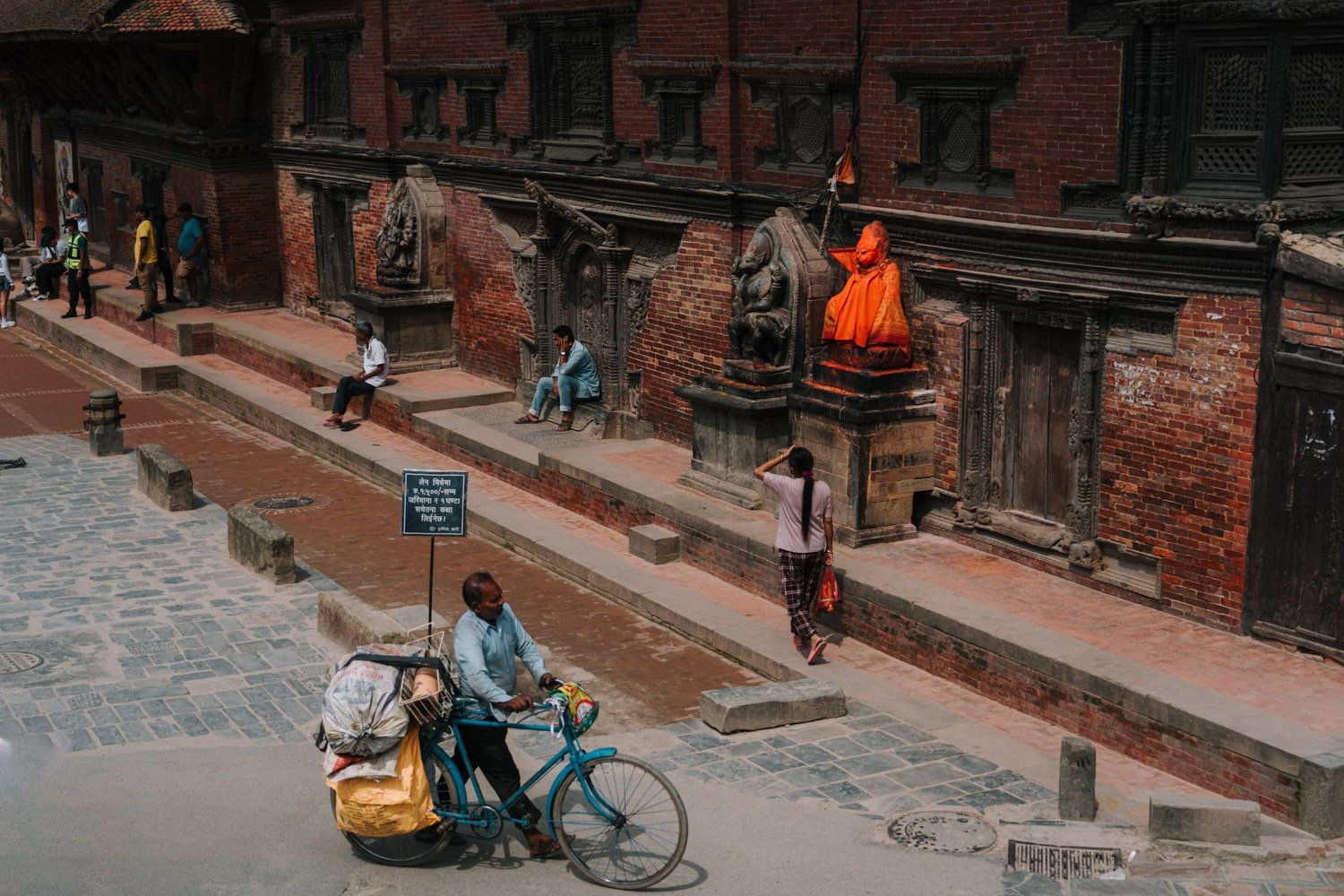
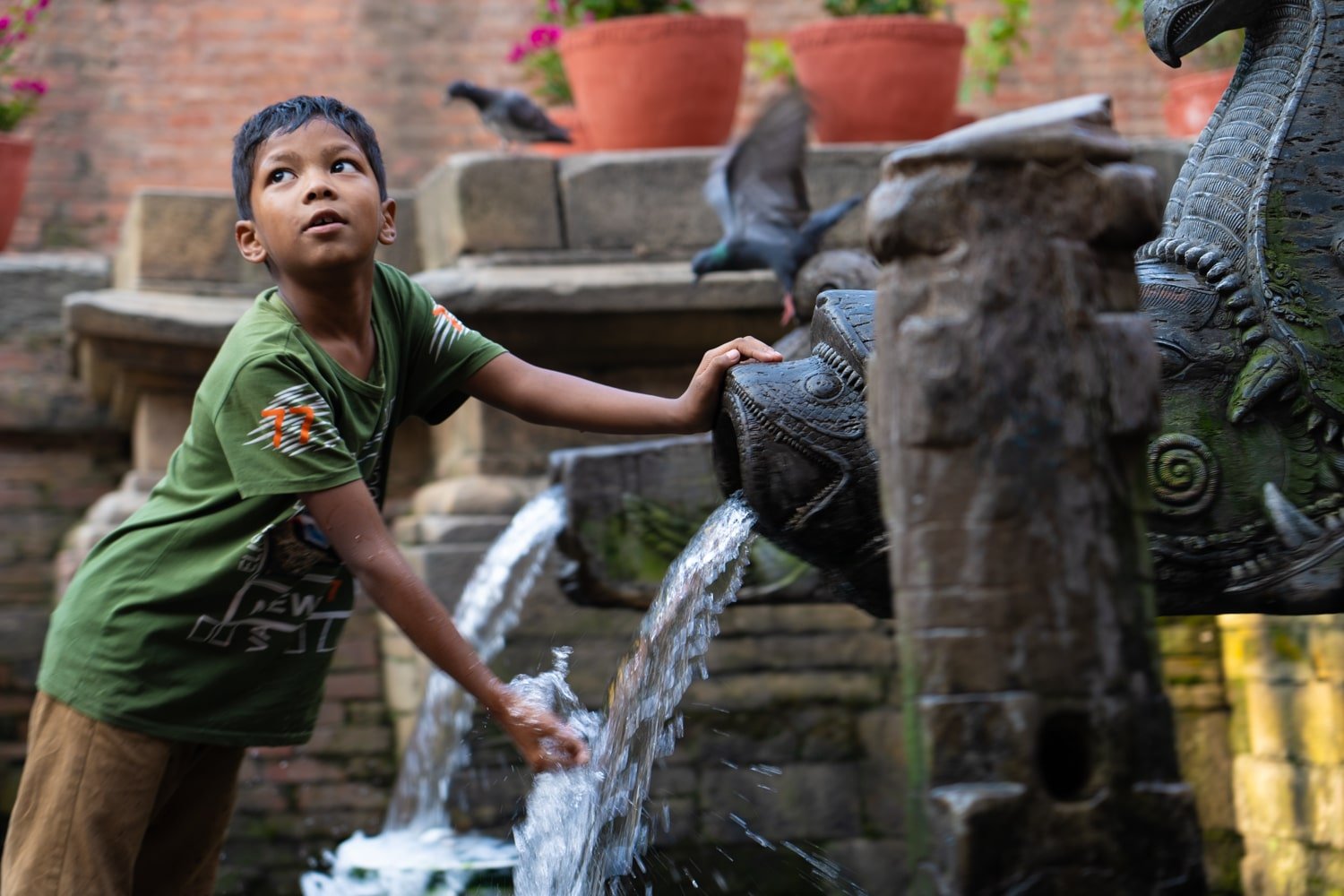
Cost & Time to Visit Patan Durbar Square
There are several ways to access Patan Durbar Square, but only one where you can purchase the official entry ticket which costs 1000 Nprs, or around $10 USD. Here are the costs for all the heritage sites in Kathmandu Valley, Lumbini, and Chitwan.
PS — If you’re thinking of accessing Patan Durbar Square via the back streets, just know that one of the patrolling guards will eventually ask you to show your ticket.
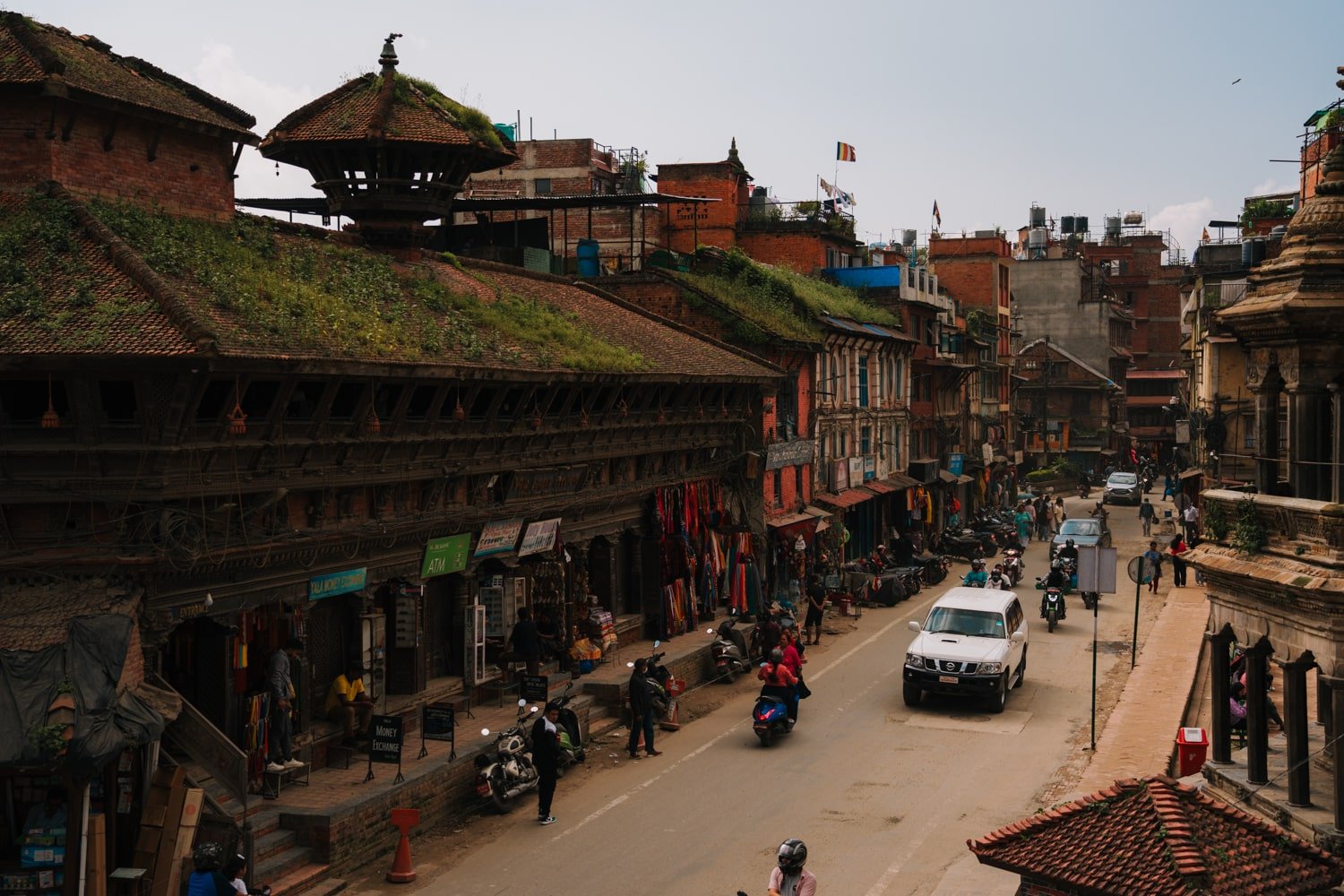
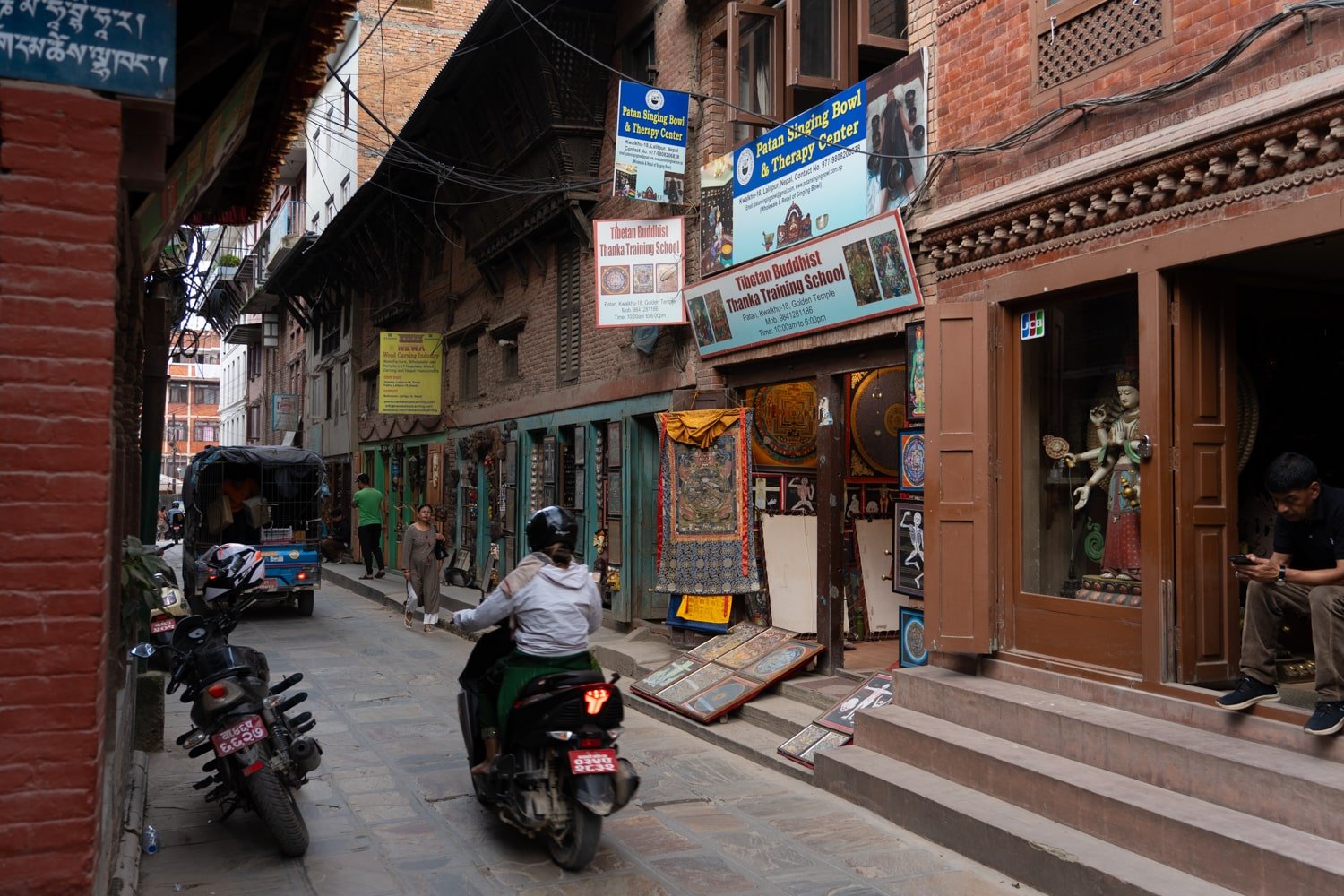
Should You Take a Tour of Patan Durbar Square?
You don’t need to take a guide in order to enjoy Patan’s riches, but if you do, you will certainly learn heaps about the Newar architecture, history, and religious symbology (both Hinduism and Buddhism thrive in Patan Durbar Square).
I arrived on site and decided to hire a local certified guide on the spot. His name was Ram, and he has been offering private tours for thirty-five years, making him “the elder” of the eighteen tour guides in the area.
You can also pre-book tours of Patan online here
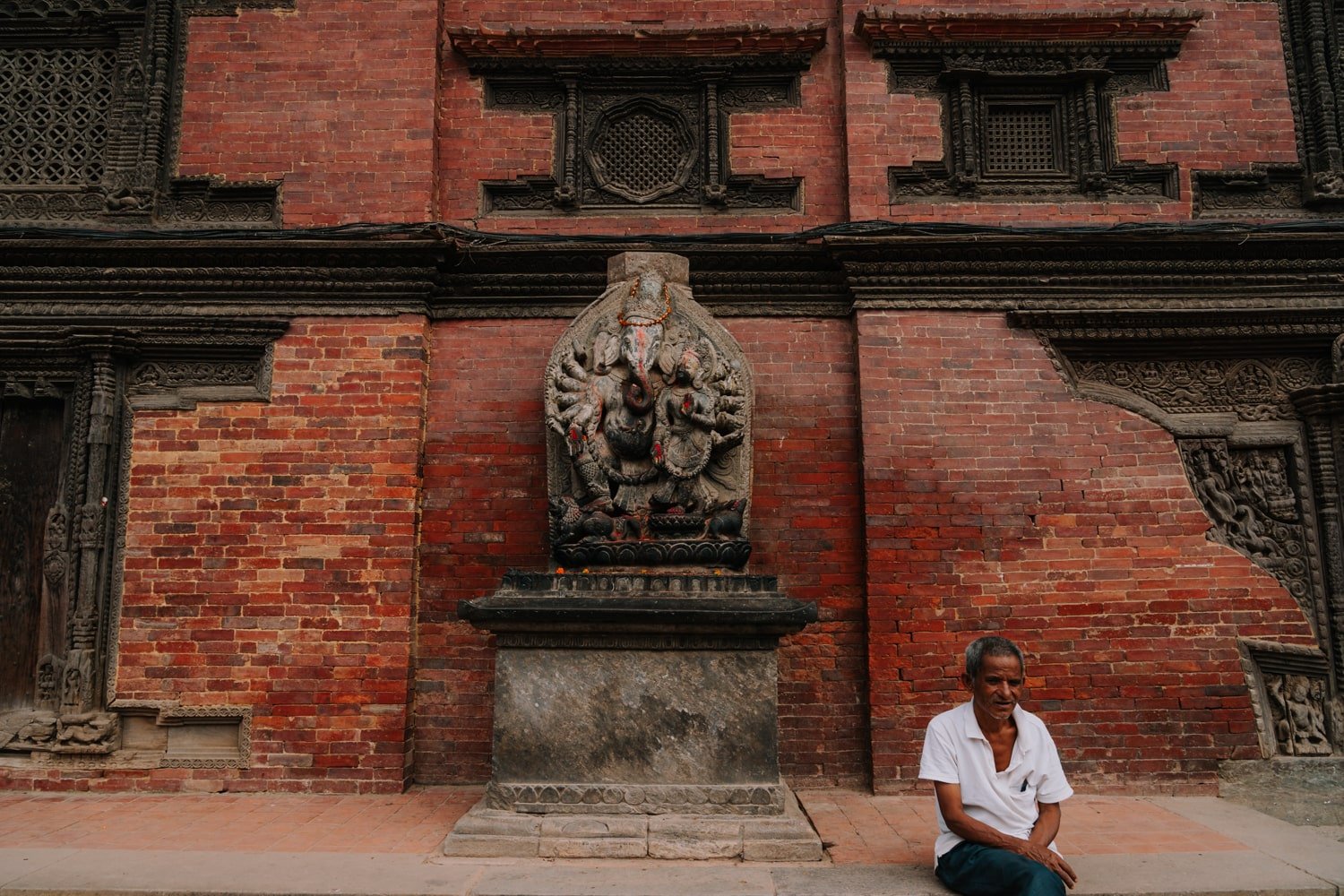

Option 1: DIY Tour
If you go the do-it-yourself route and decide to visit Patan Durbar Square without a guide, then take note of these important temples and structures:
- Patan Royal Palace Complex — inside this former palace you can visit the bottom and upper floors as well as the three decorated inner courtyards (Mul Chowk, Sundari Chowk, and Keshab Narayan Chowk) and the exterior garden and bath (Bhandarkal).
- Krishna Mandir — one of the most famous temples in Nepal.
- Golden Temple (Hiryanya Varna Mahavihar) — A gorgeous, golden temple! Step inside the healing bowl shop behind the temple on your left for a free demonstration. The Golden Temple costs an extra NPR 100 to visit.
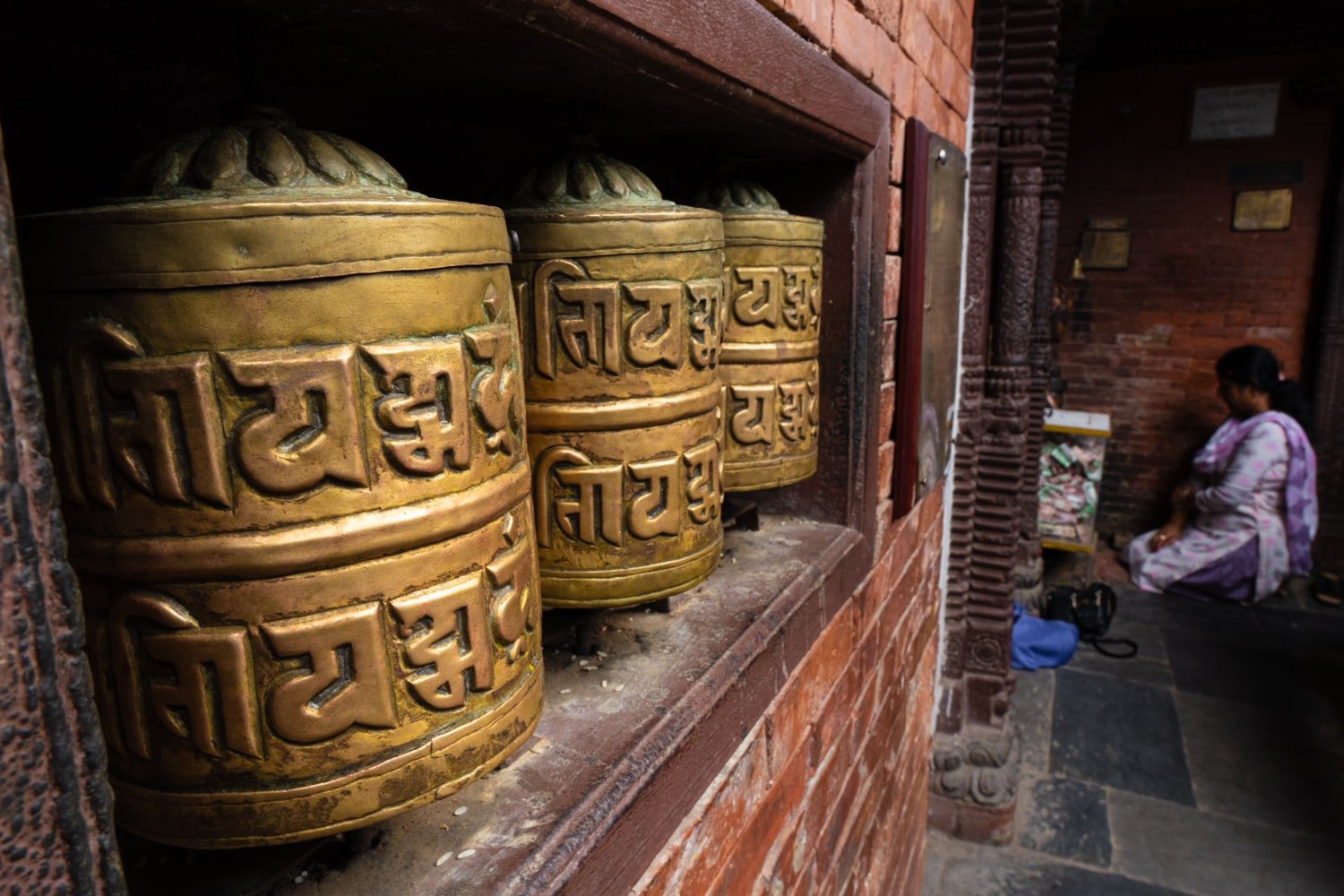

- Vishwanath Temple — Lord Shiva’s temple, marked by his animal vehicle, the bull, and two elephants by the entrance.
- Patan Museum — A must-visit when in Patan! Included in your NPR 1000 Patan entry ticket. Here is the Patan Museum brochure in English.
- Manga Hiti (Fountain) — An ancient fountain (built in 570 AD) that is still working today, bringing fresh water into the Mangal Bazar from the Himalayas.
- Mahaboudha — The “Temple of a Thousand Buddhas” with around one thousand images of Lord Buddha.
This brief list just merely scratches the surface as there are 55 temples and over 100 courtyards.
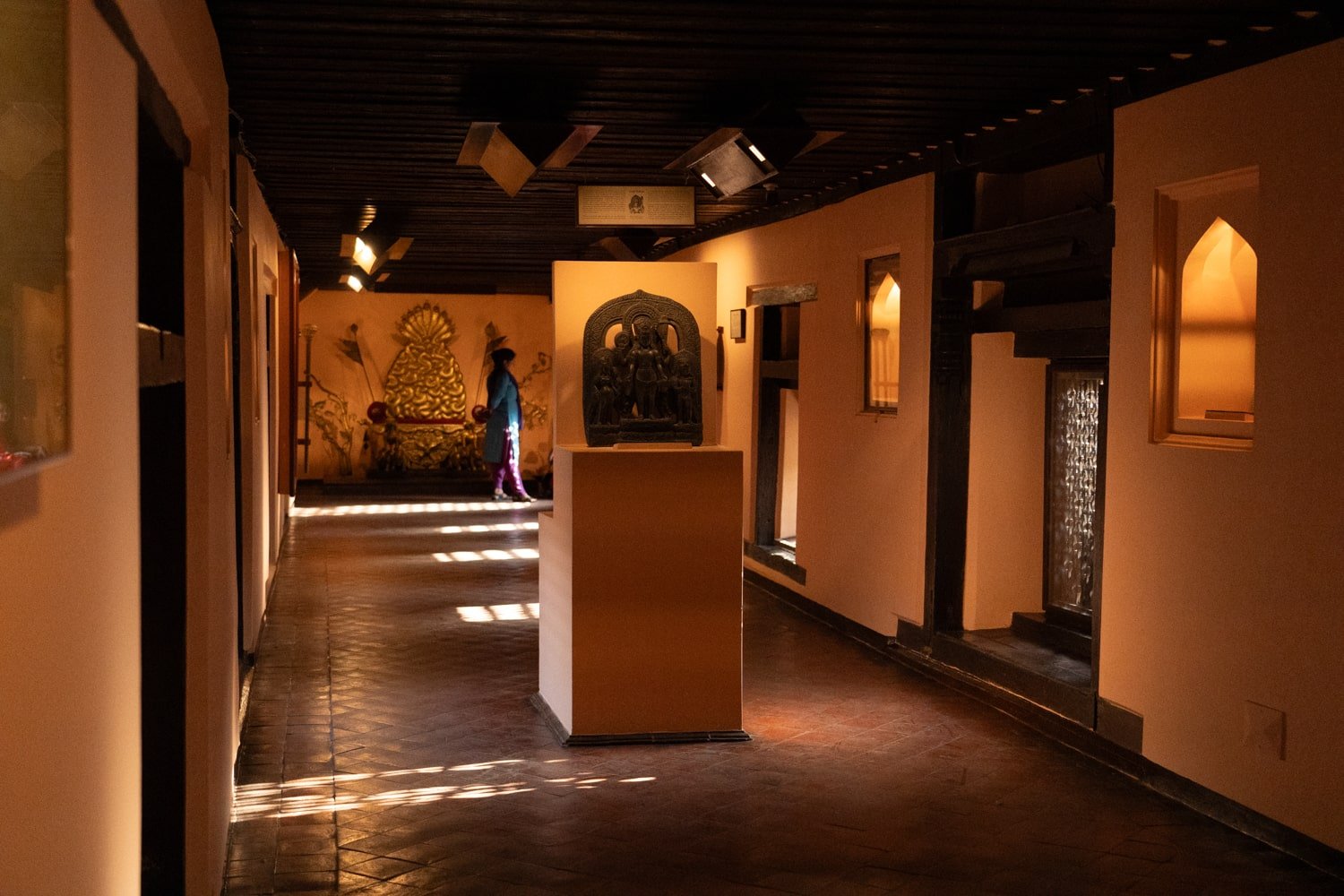
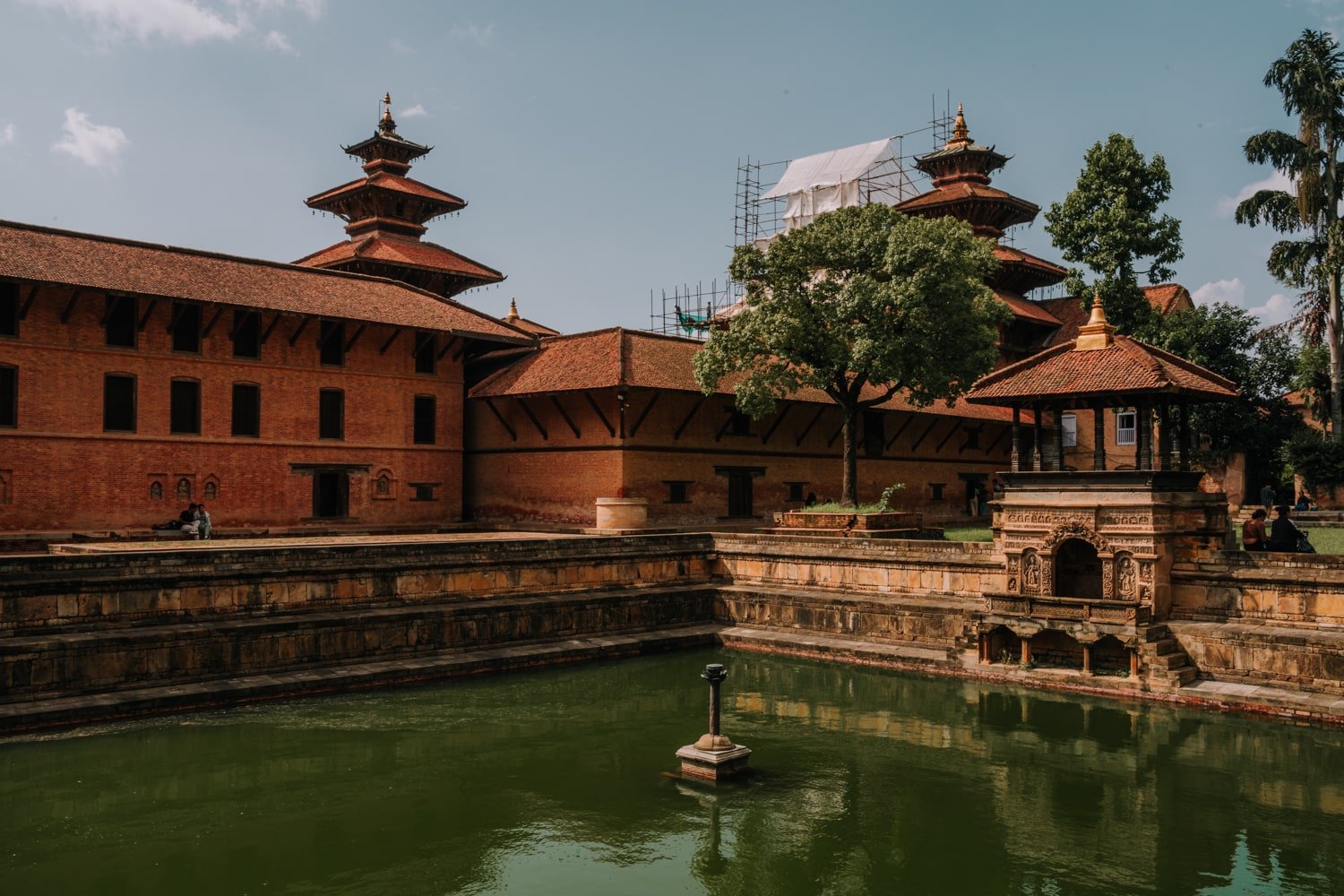
Recommended Guided Tours Patan Durbar
Option 2: Hire a guide on-site
- Cost: Up to 2000 Rs ($15-20 USD) per person for a 1-1.5 hours visit
- Where: Find the official (licensed) tour guides near the entrance where you buy your Patan ticket
Option 3: Book a private tour online
🎟️ Note that even if you hire a guide or book a tour online, you may still have to pay the 100 Rs entrance fee to visit the Golden Temple, located down an alley behind Patan Durbar Square. The Patan Museum entrance fee was included in my tour though.
The benefit of hiring a guide is that you get to see things that are hidden in plain sight.
There were so many things and symbolisms that I wouldn’t have discovered by simply walking around on my own (like the Kamasutra carvings, lol!).
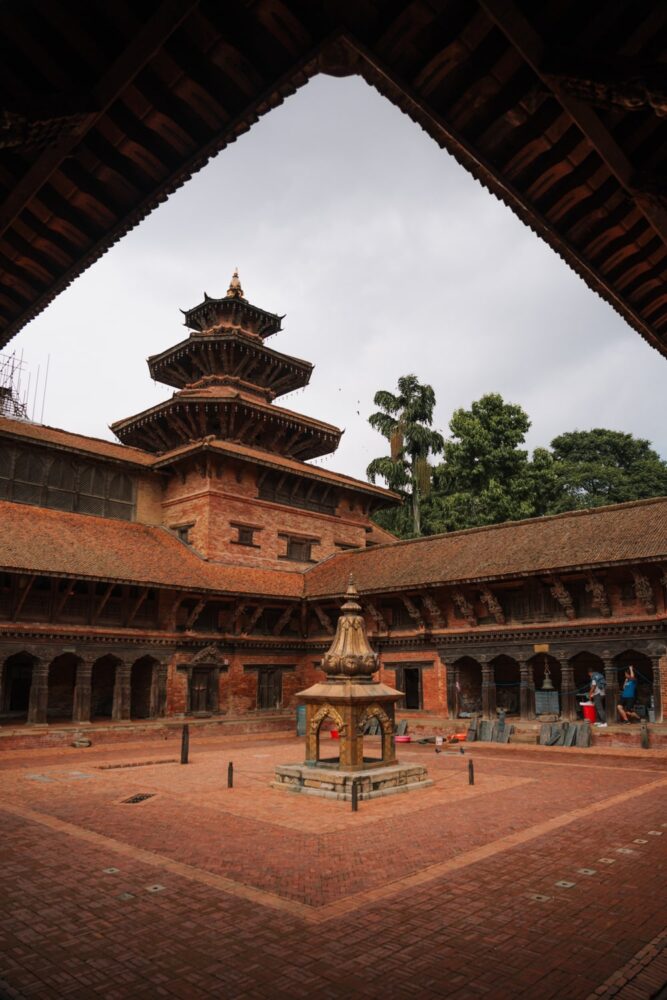
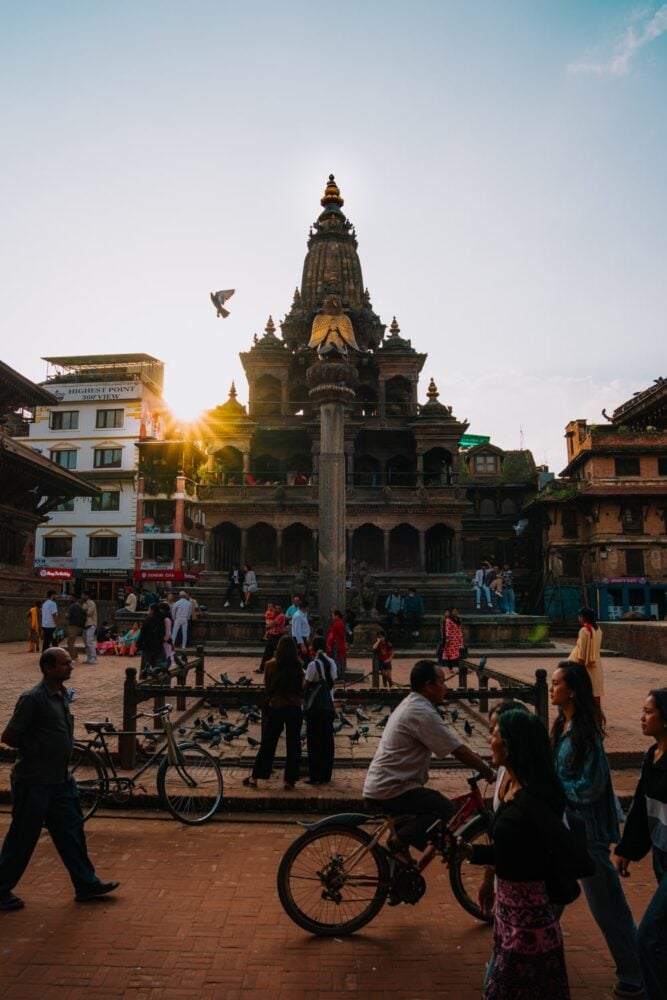
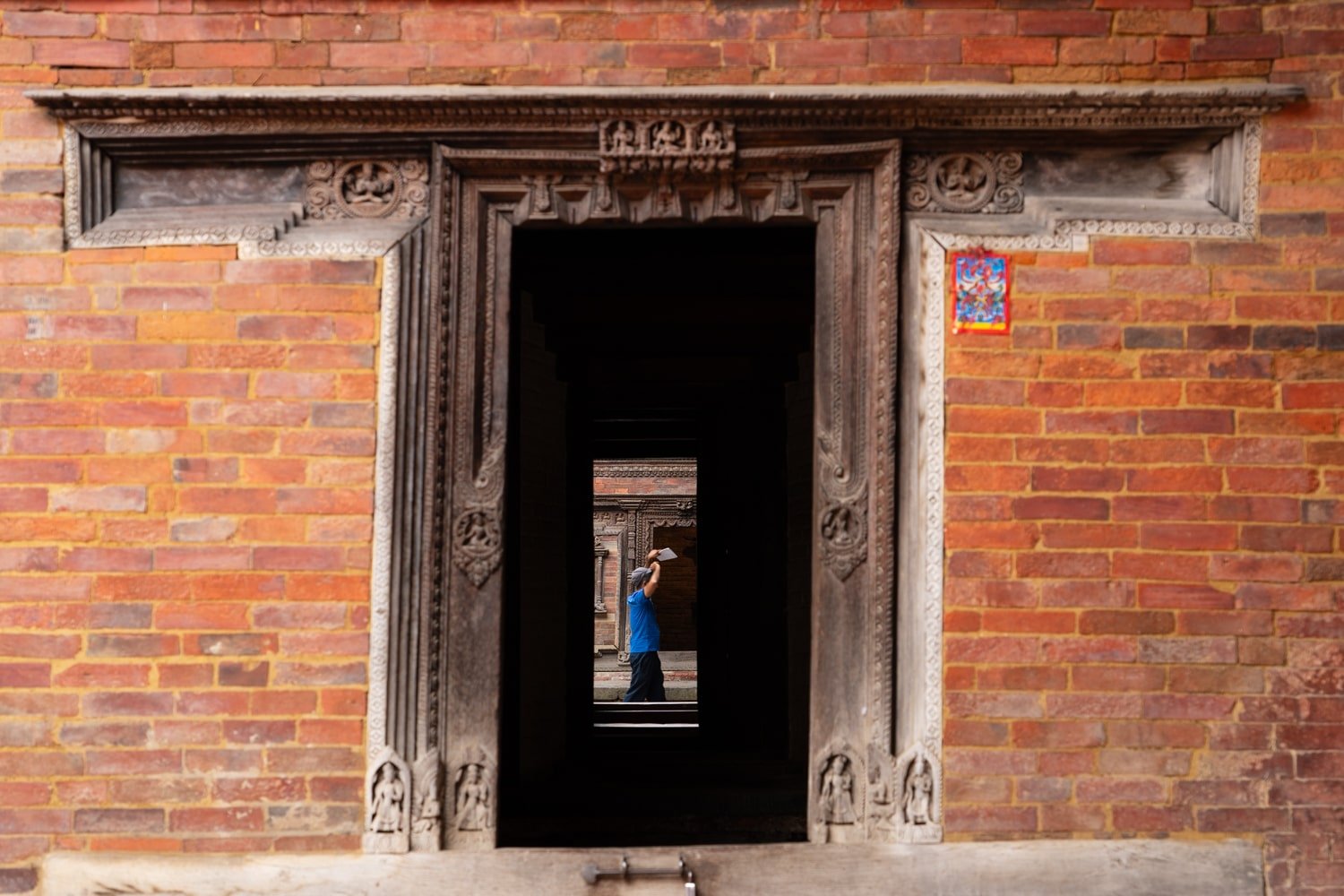
What to See & Do in Patan Durbar Square
With so much to see and do in Patan, you could easily spend a whole morning or afternoon here.
What you do and how you spend your time will largely vary on whether or not you choose to go around with a guide.
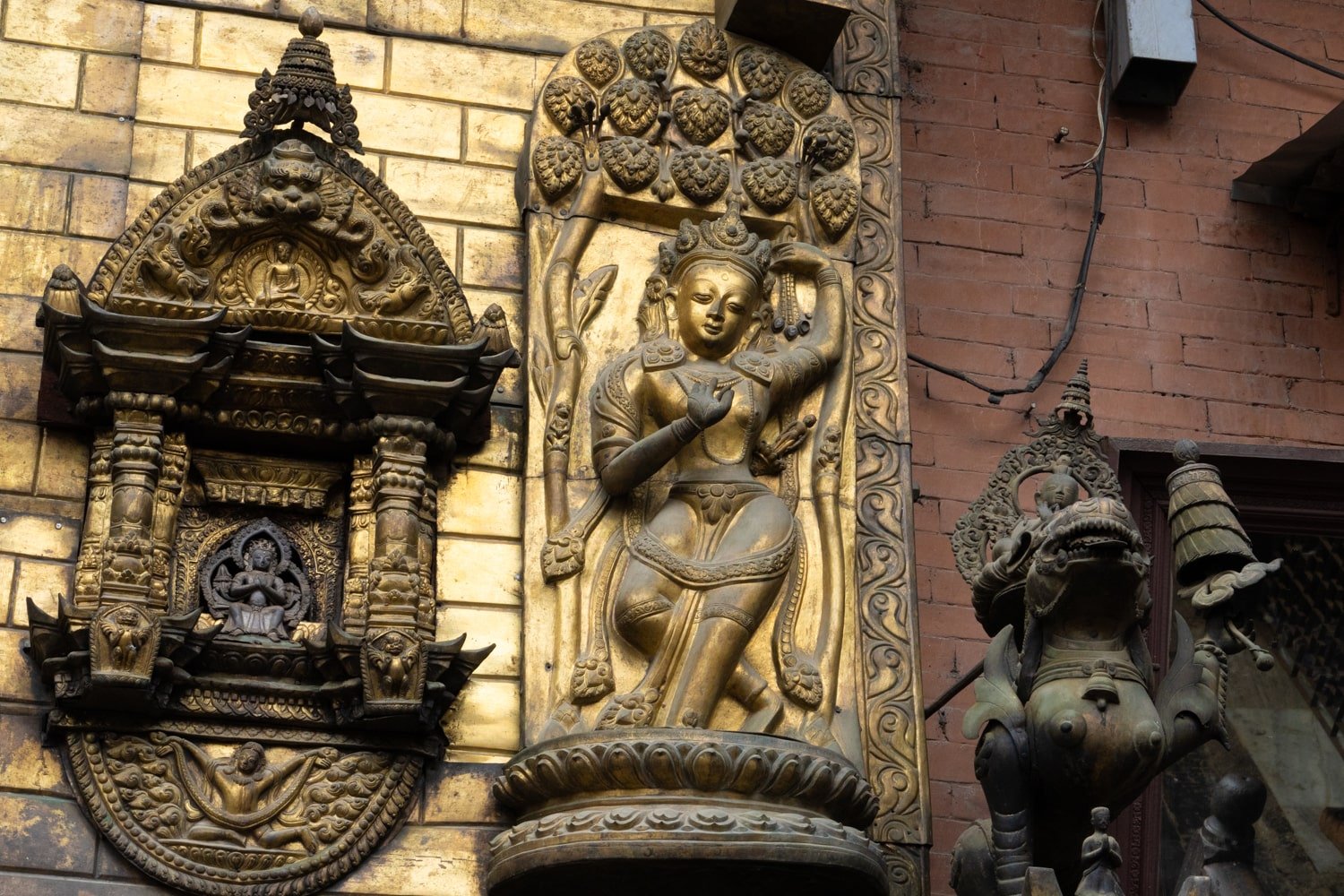
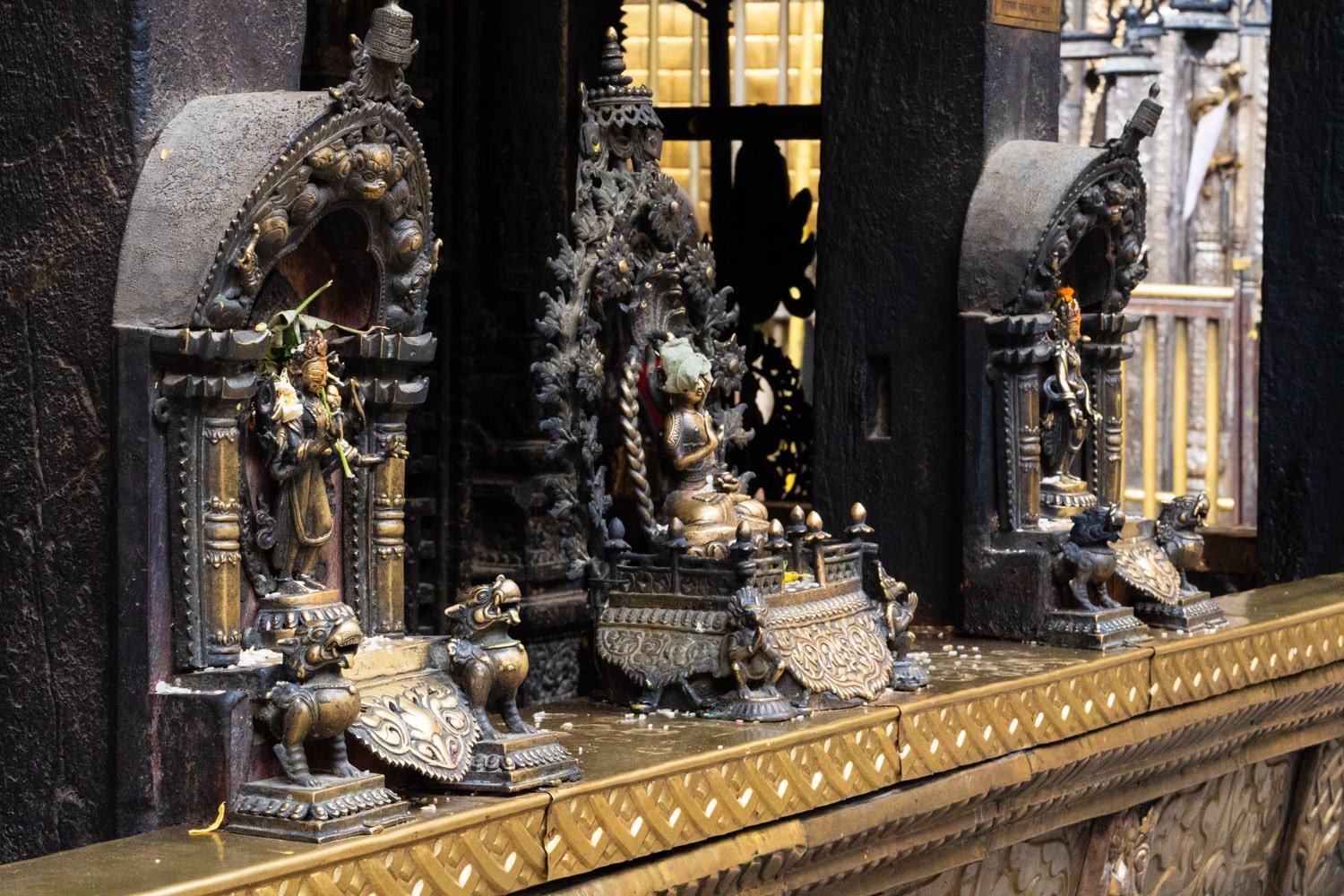
Whether you do or don’t, some of the things that stood out to me—and that I enjoyed learning about—were the:
- Manga Hiti fountain
- Kamasutra carvings and the “vehicles” of each Hindu god facing the temple
- Lions or other animals in front of the temple entrances which represent yin and yang (always one male and one female)
- Newar windows for the women to peer out of the former palace
- Bhadalkar bath
- The sacrifice of 108 animals for the Dashain festival
- Shiva lingam symbol of fertility
- Krishna Mandir with Garuda vehicle out front
- Thankpa paintings and the representation of the mandala
- Healing bowl demonstration/shop (location) and the 7 chakras and the full moon symbology (inside the Golden Temple)
You can read the description of more temples here and learn more about the Patan Museum here.
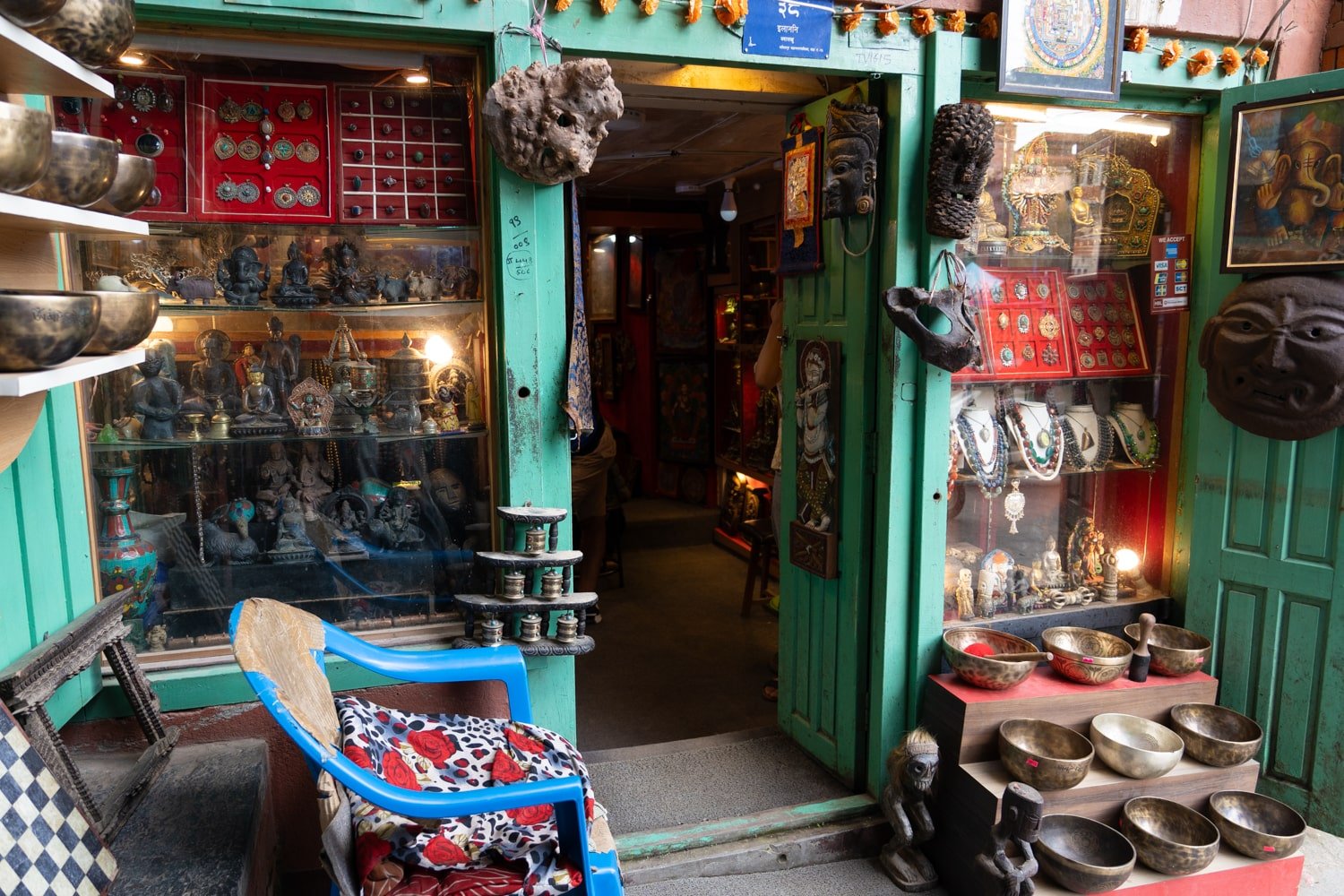
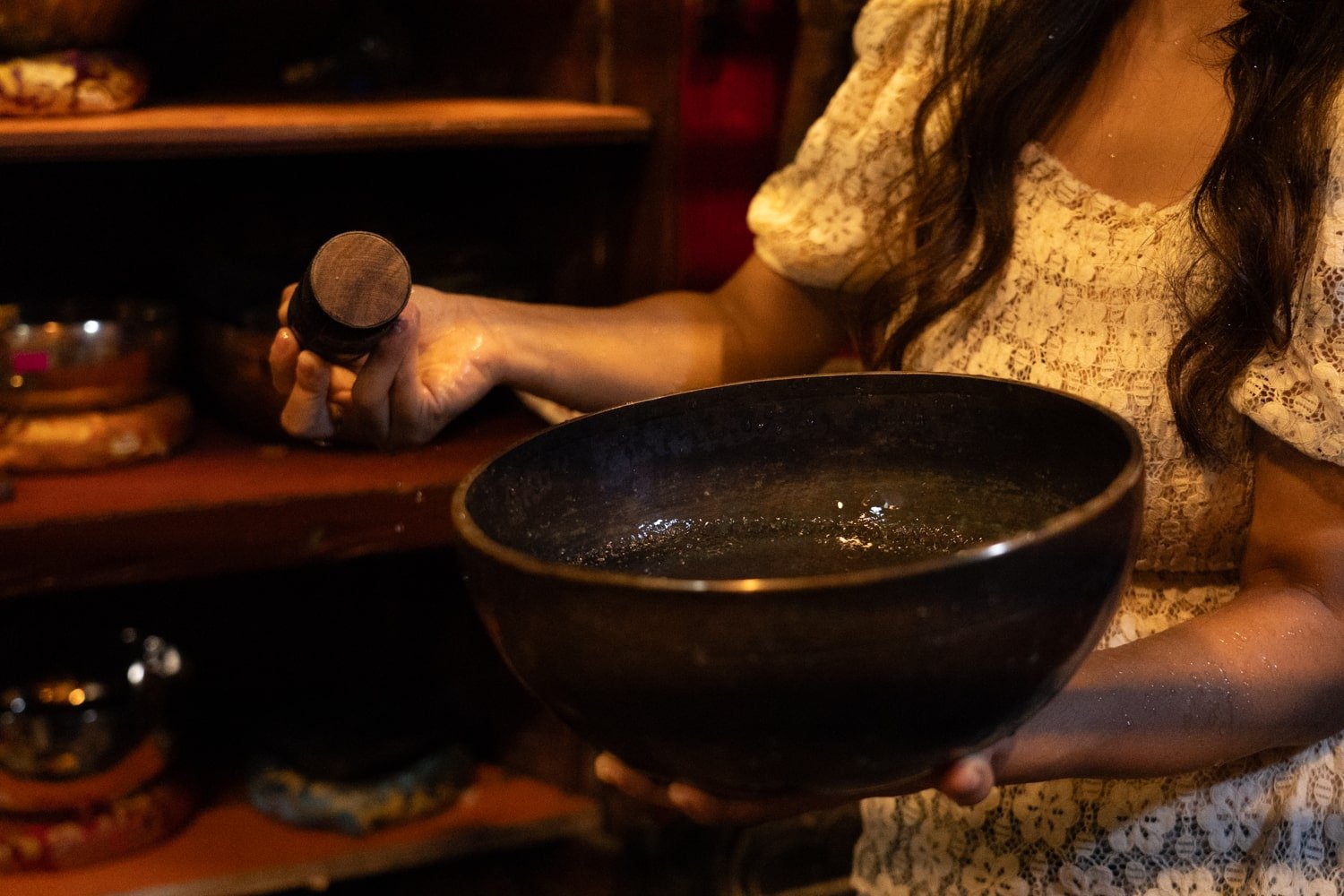
Other than wandering around and learning about the rich history, architecture, and culture that makes Patan Durbar Square such an open-air museum, other things to do here include shopping and visiting a rooftop cafe.
For shopping, Patan is a fantastic place for Thankpa paintings, healing bowls, hand-crafted rugs, jewelry, and street food.
Strolling (and getting lost) around the backstreets around Patan is a must, if you have the time!
For the rooftop cafes, pop into Cafe du Temple, Casa Pagoda, Yala Cafe & Coffee Shop, or Durbar Cafe for the best views and atmosphere of Patan Durbar Square.

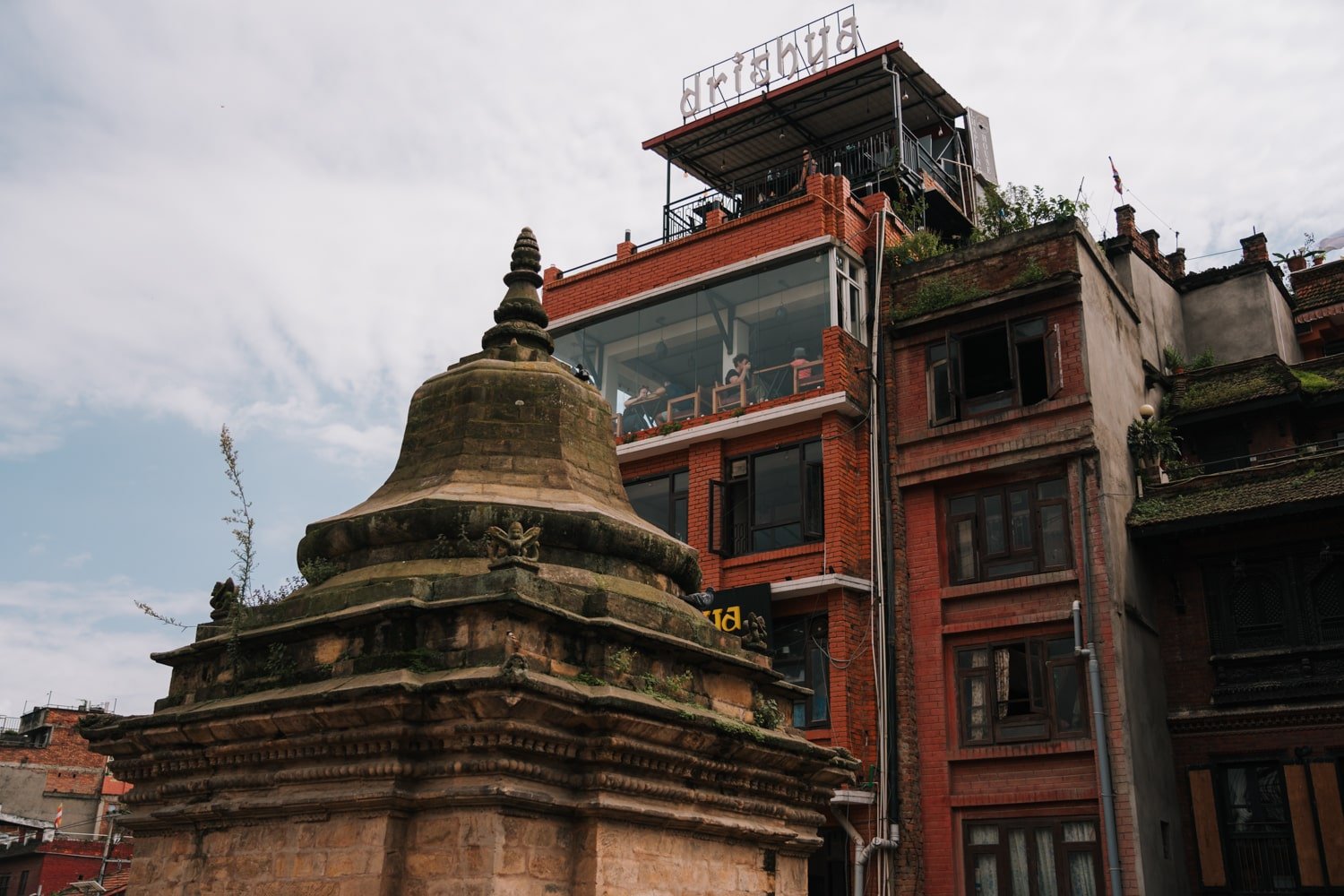
If you want to visit Patan multiple times on your trip to Nepal, then simply take your ticket stub and passport to the museum counter to get a special ticket that allows you to come back without having to pay the entrance fee again.
You can also do this for the other Durbar Squares in Kathmandu Valley. Patan is one of my favorite areas to visit in Lalitpur and Kathmandu Valley, so this little tip of the hat came in quite handy!
I hope this simple but essential guide to Patan Durbar Square helps plan your trip! Feel free to share your experiences or questions in the comments below.
<!–
–>
